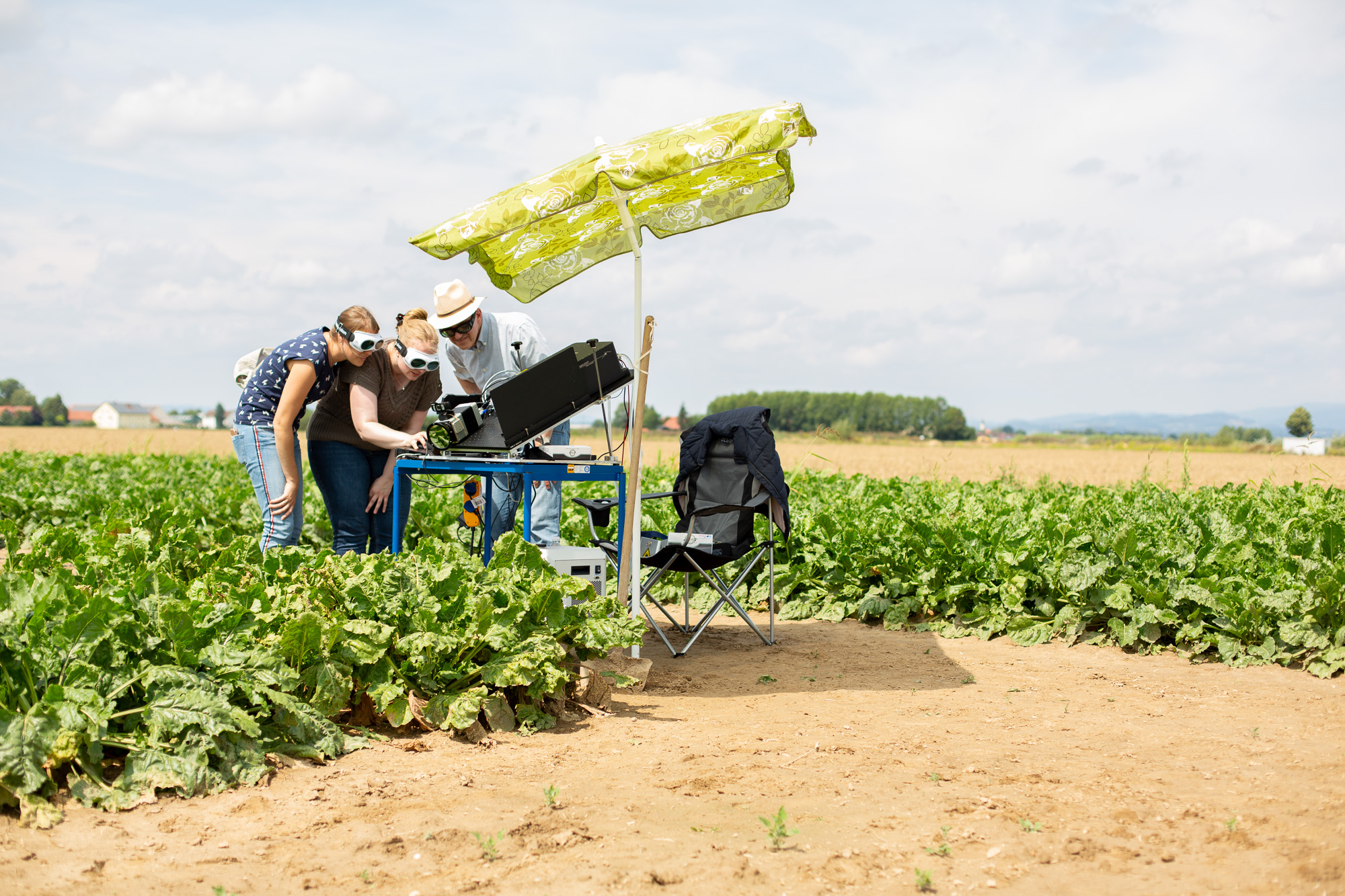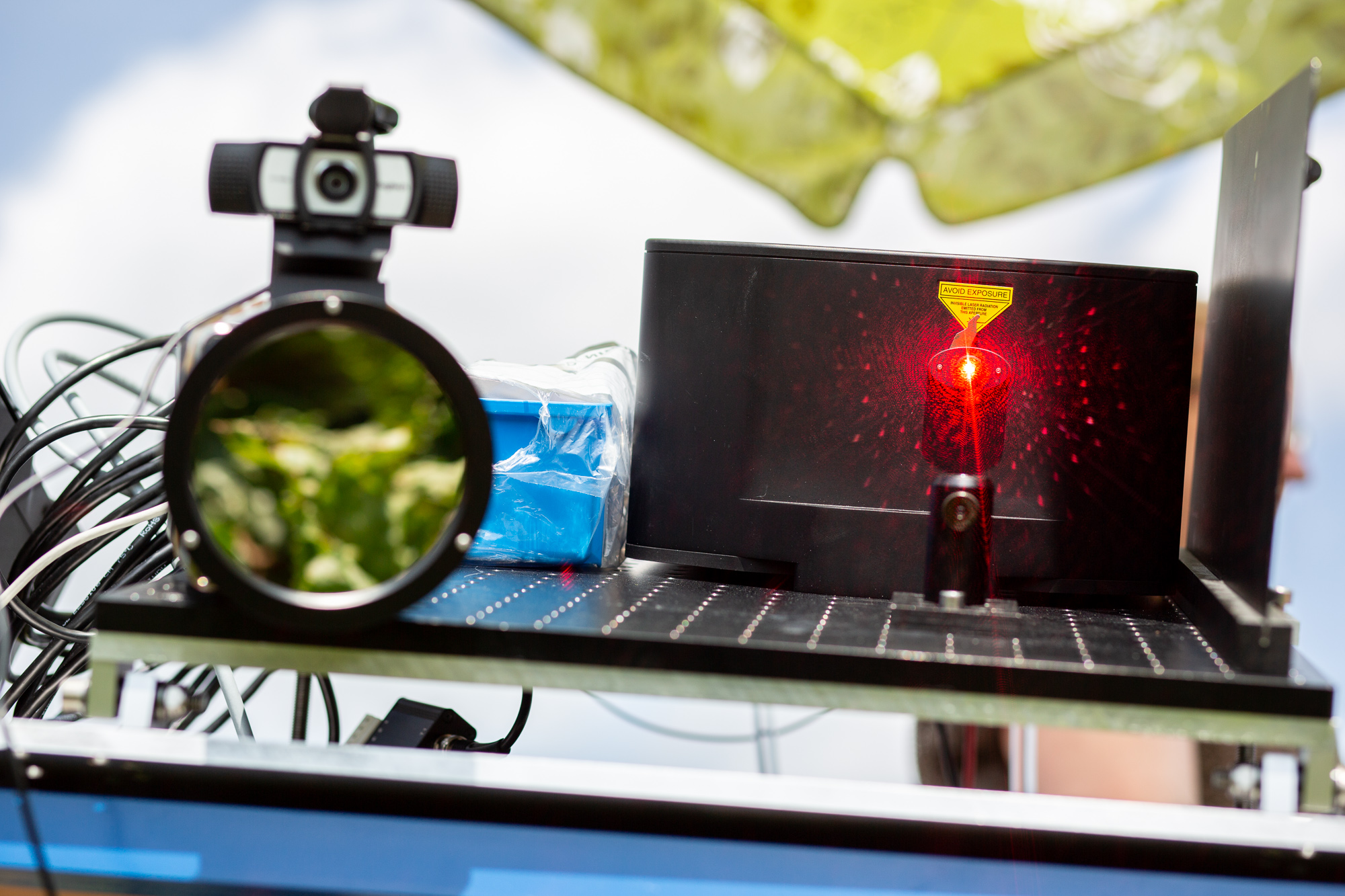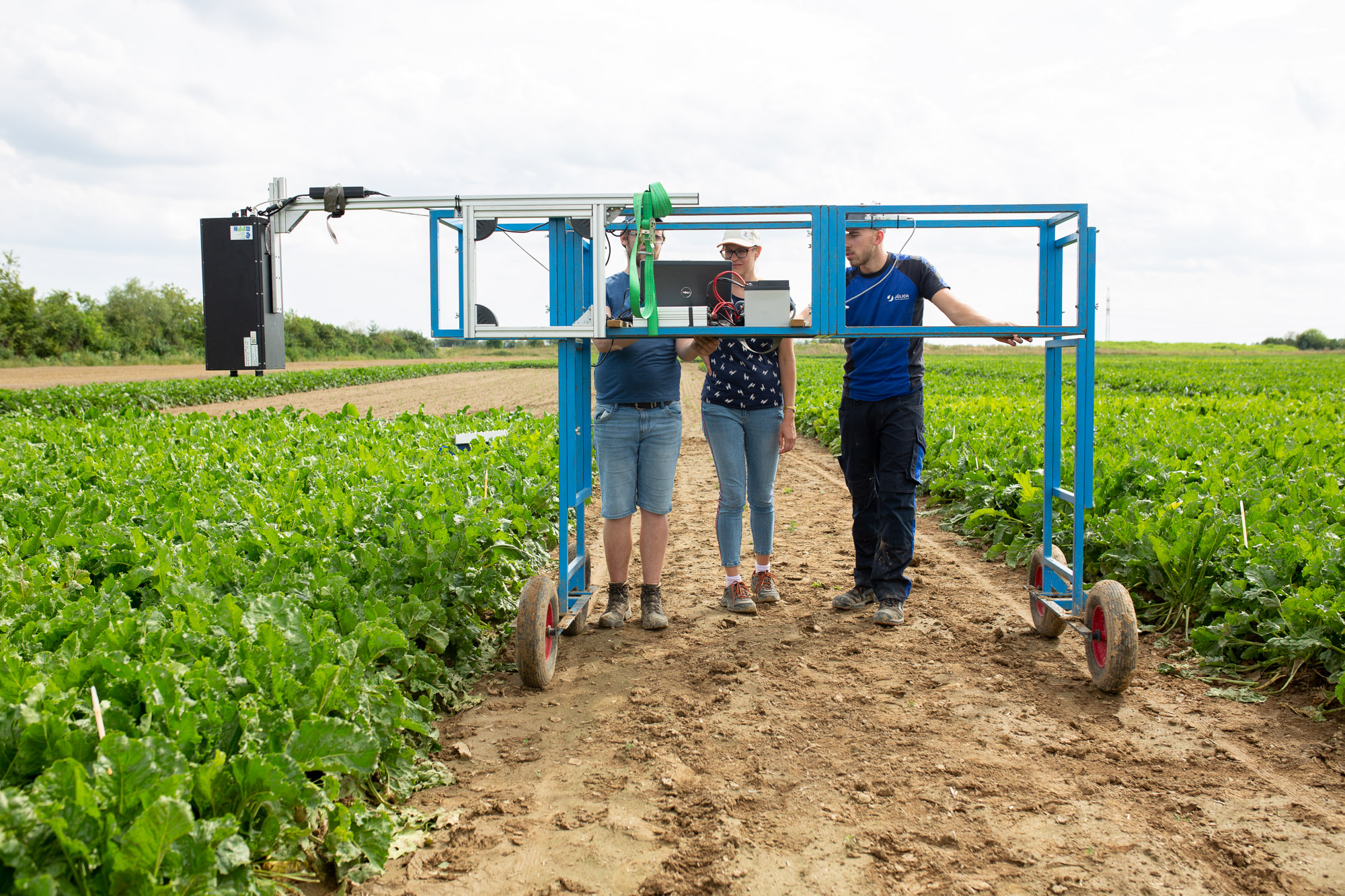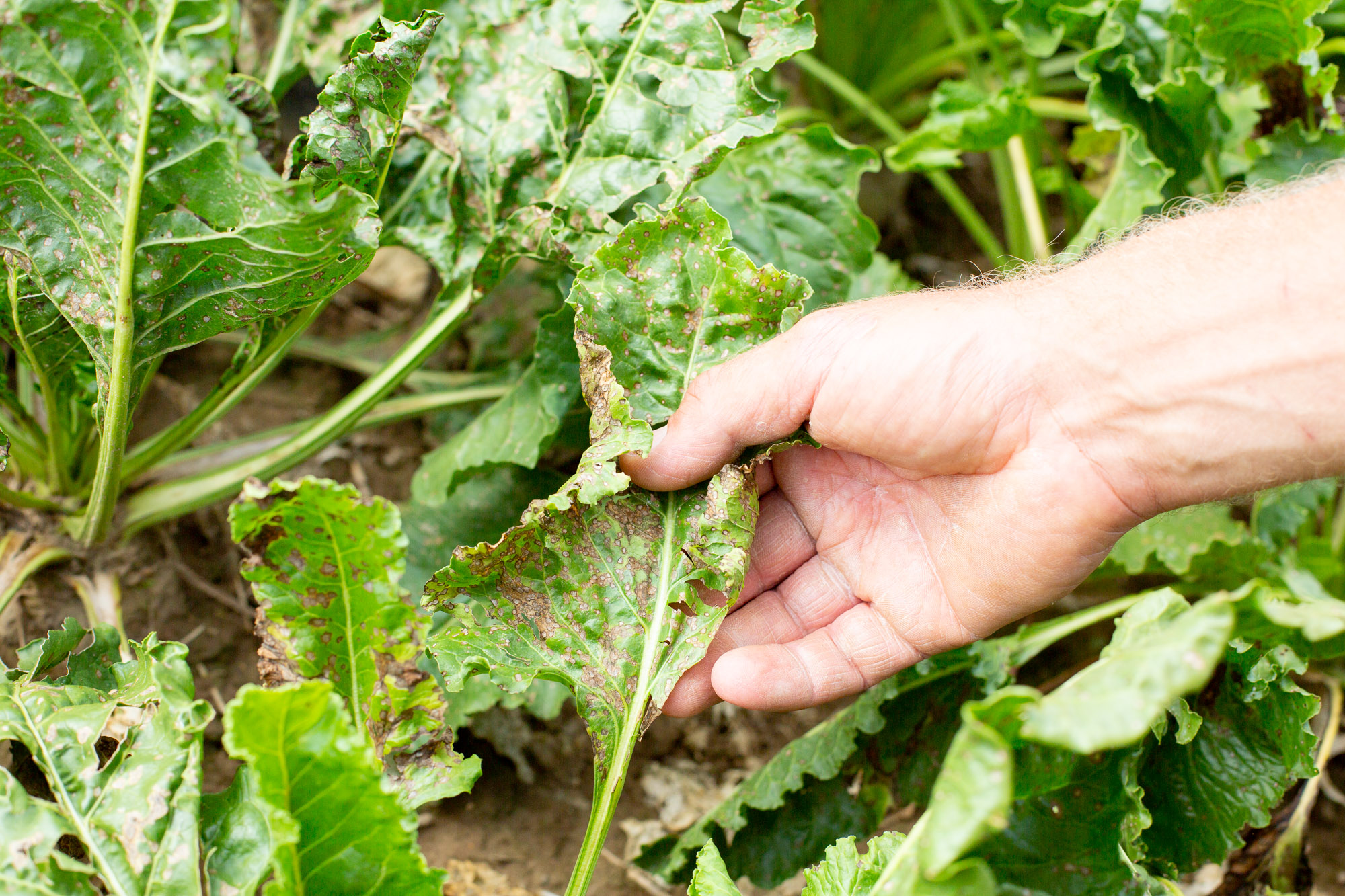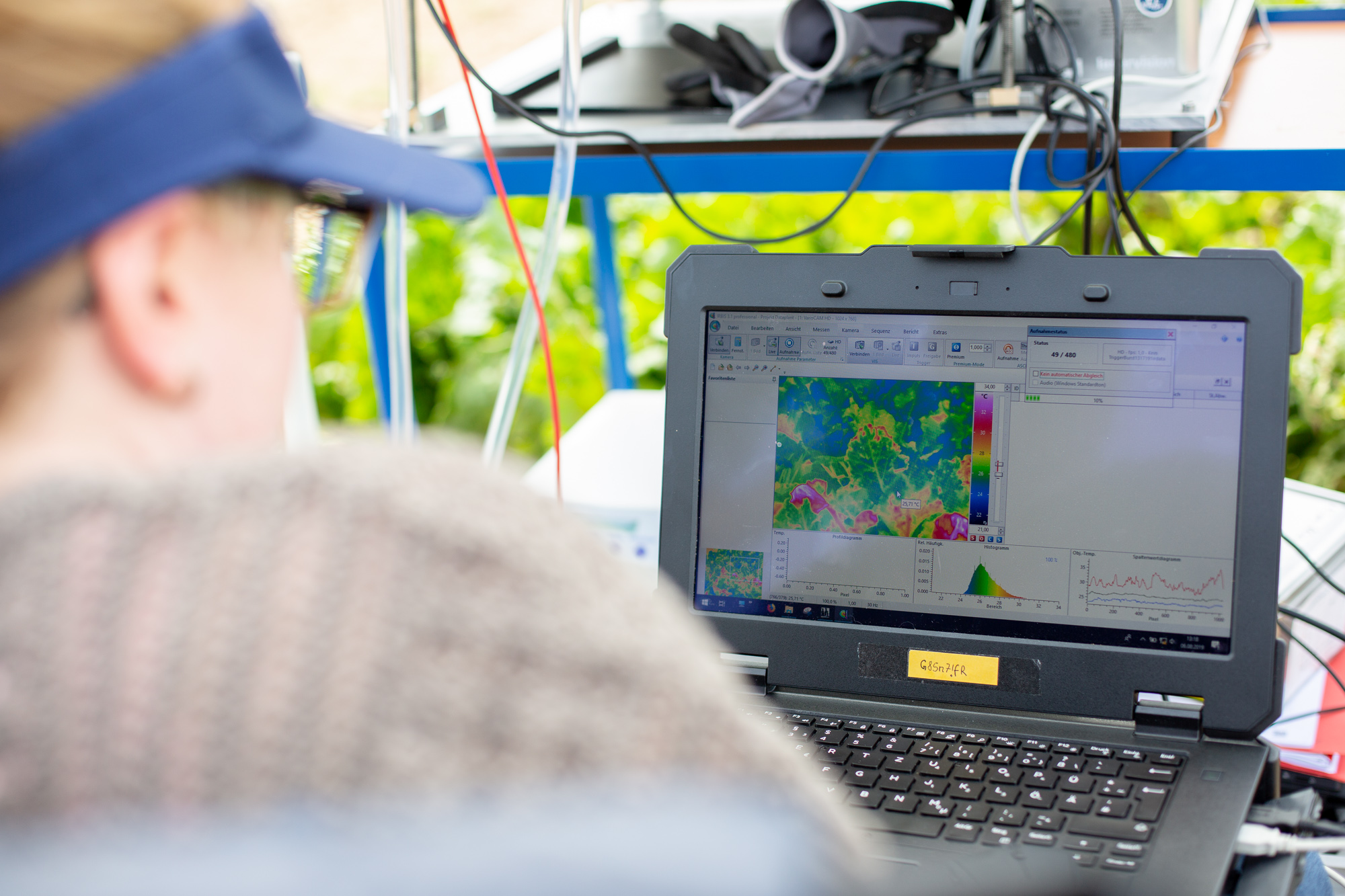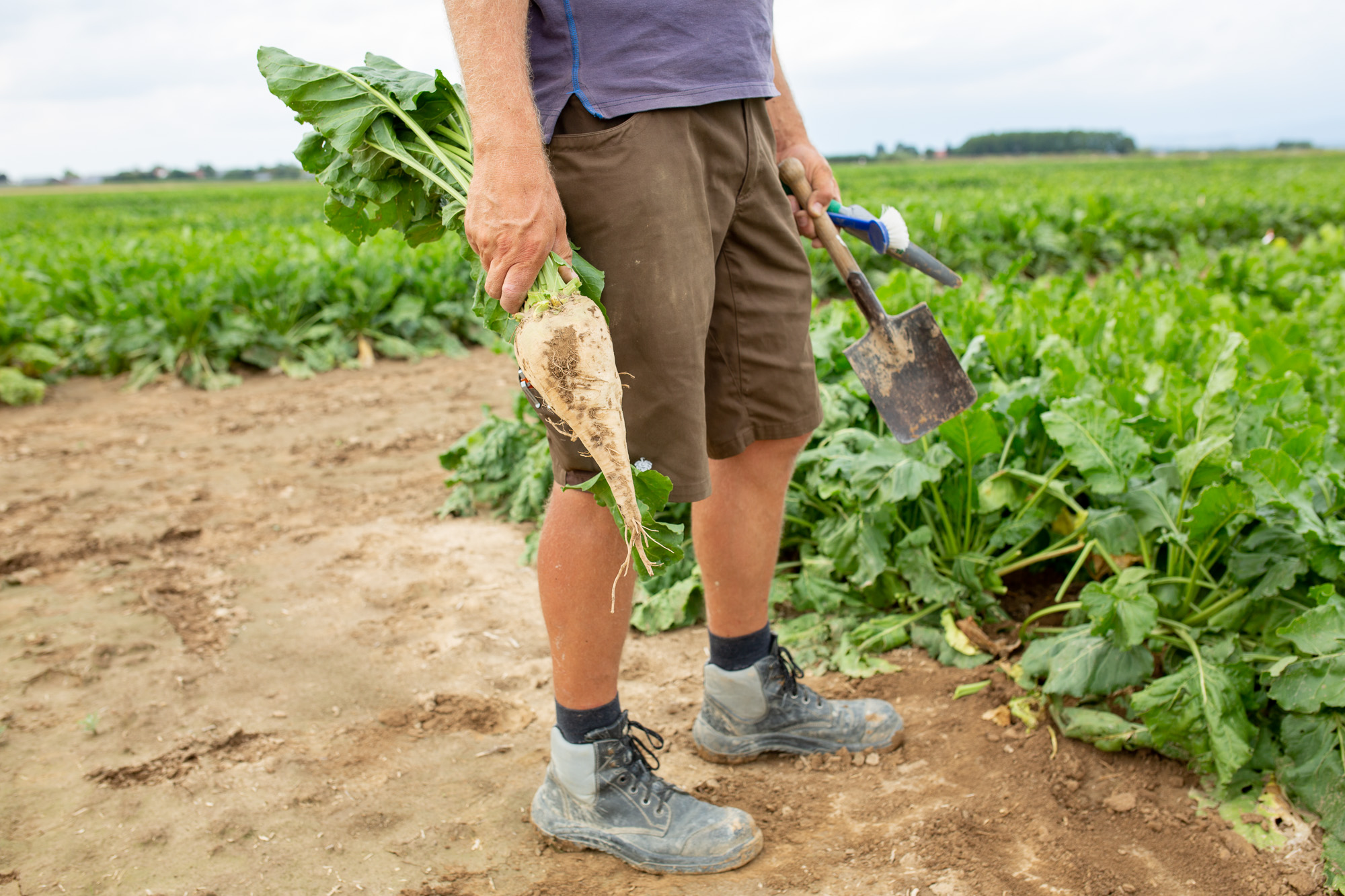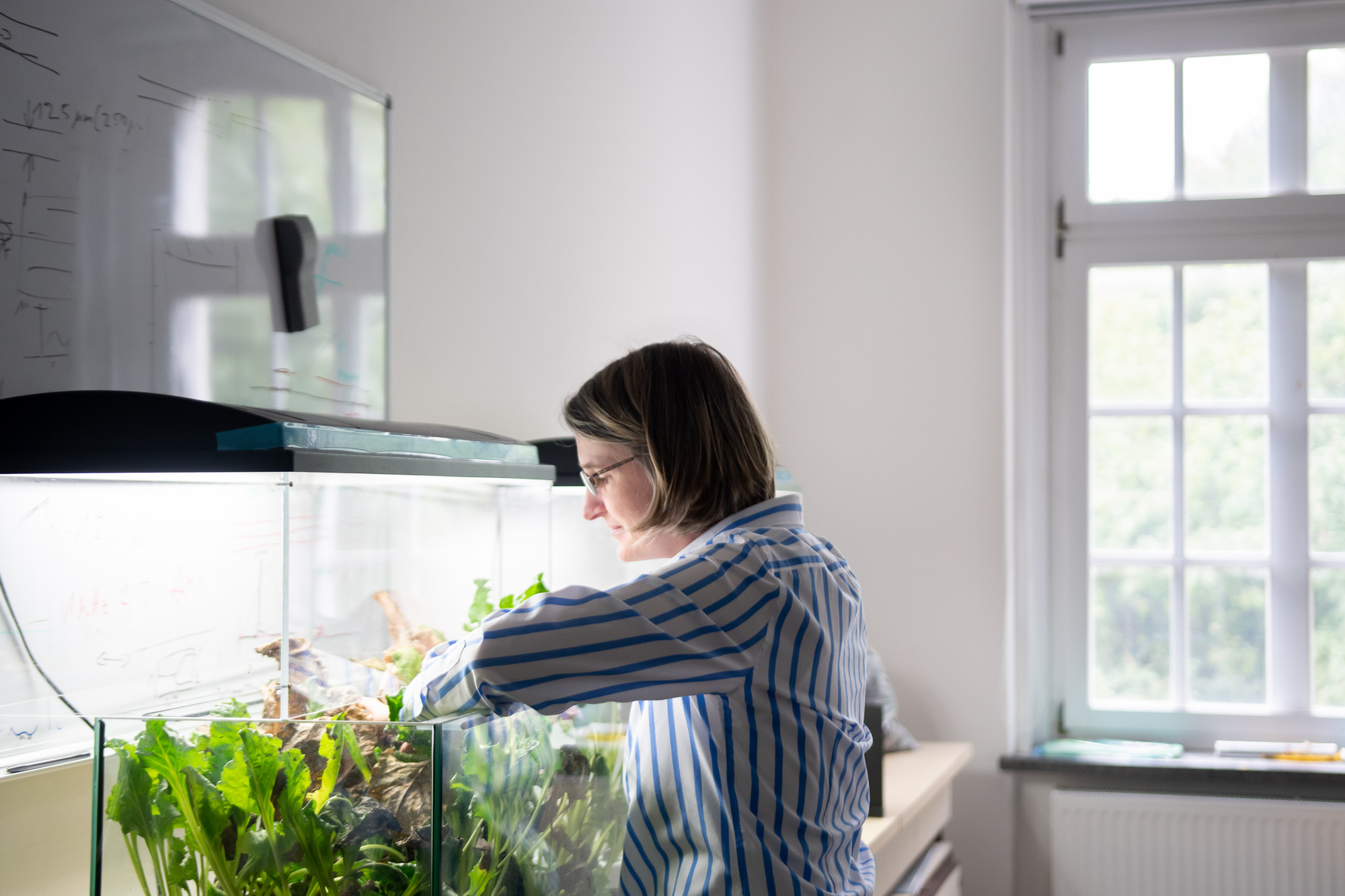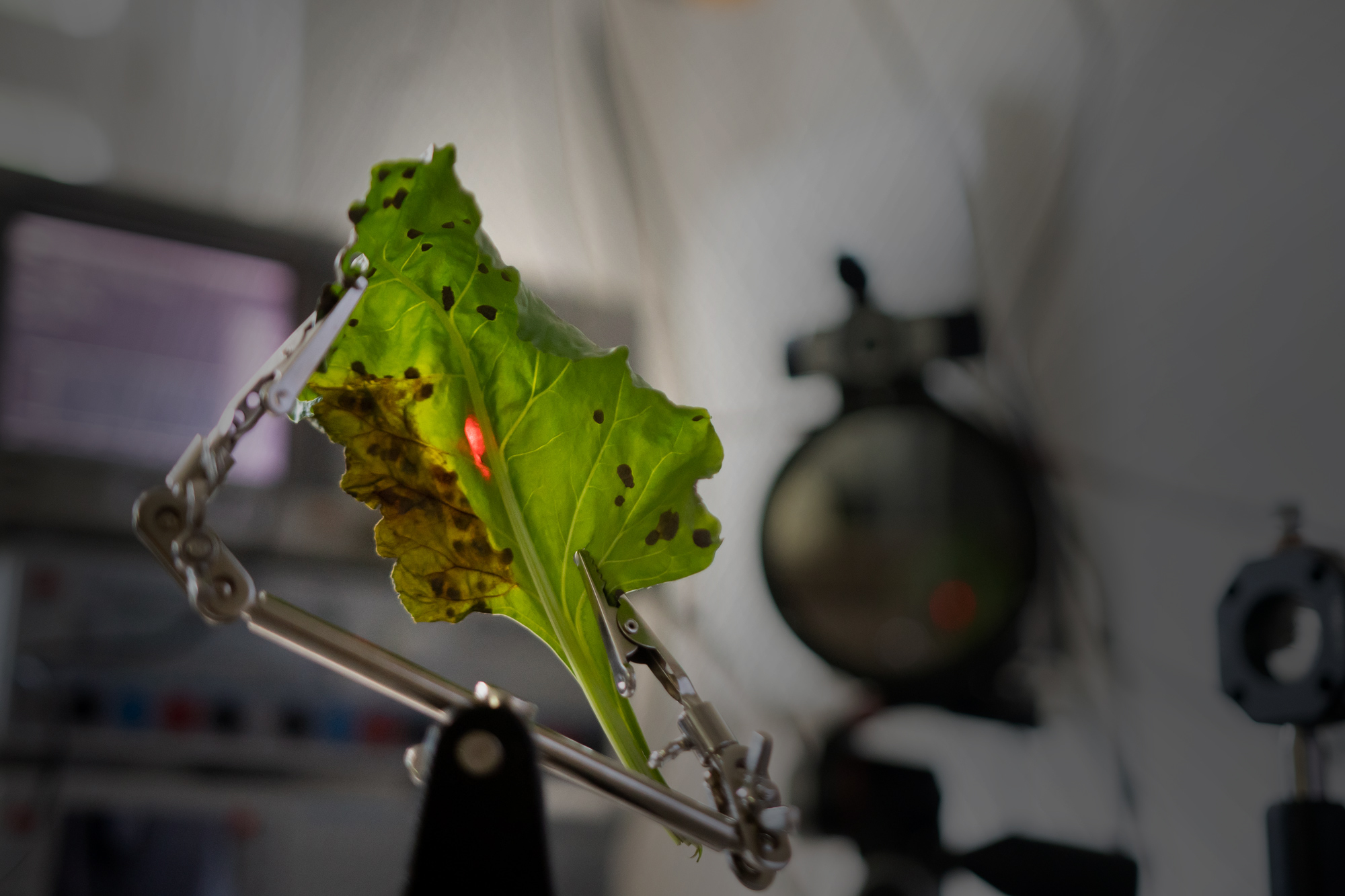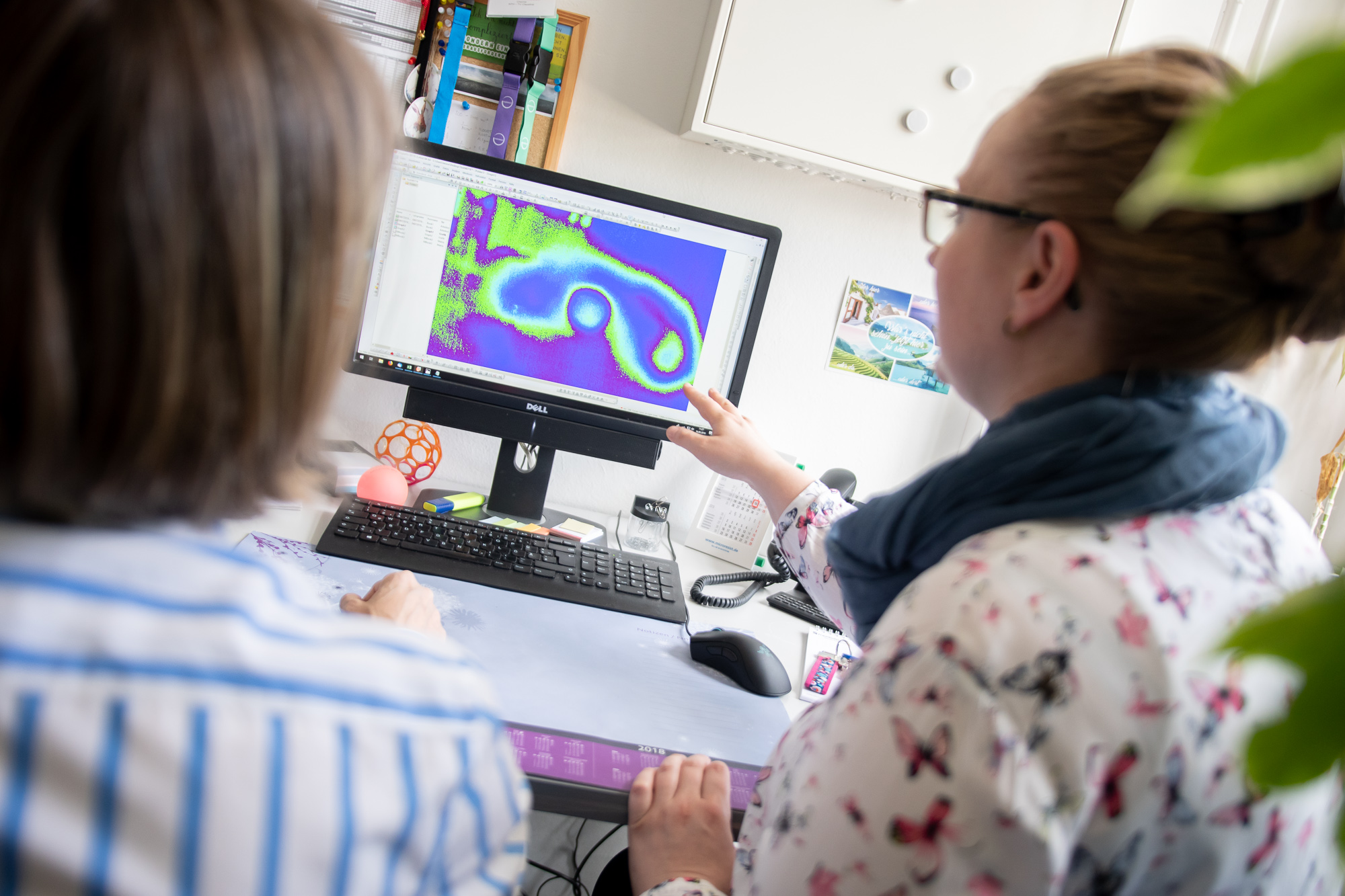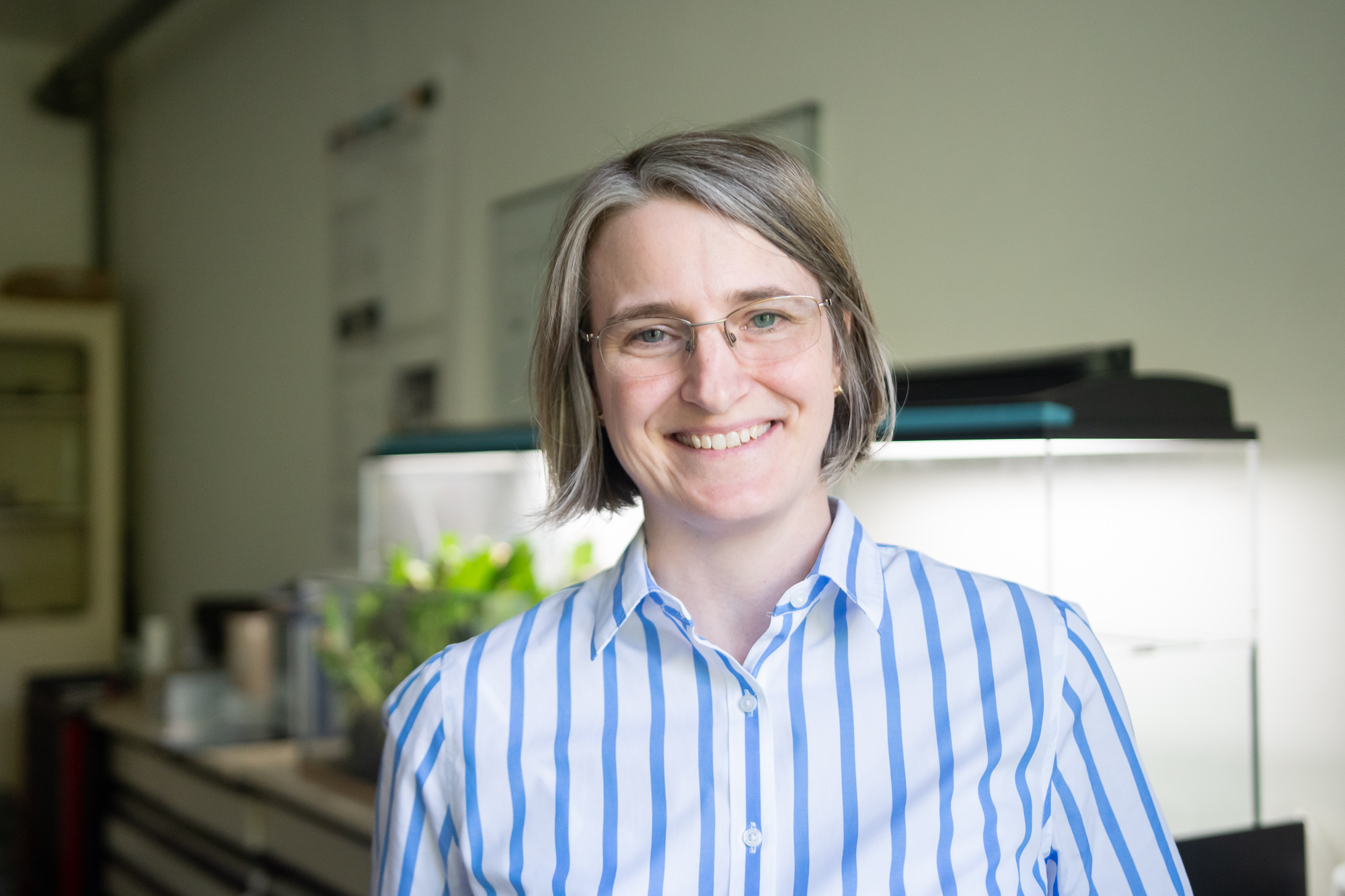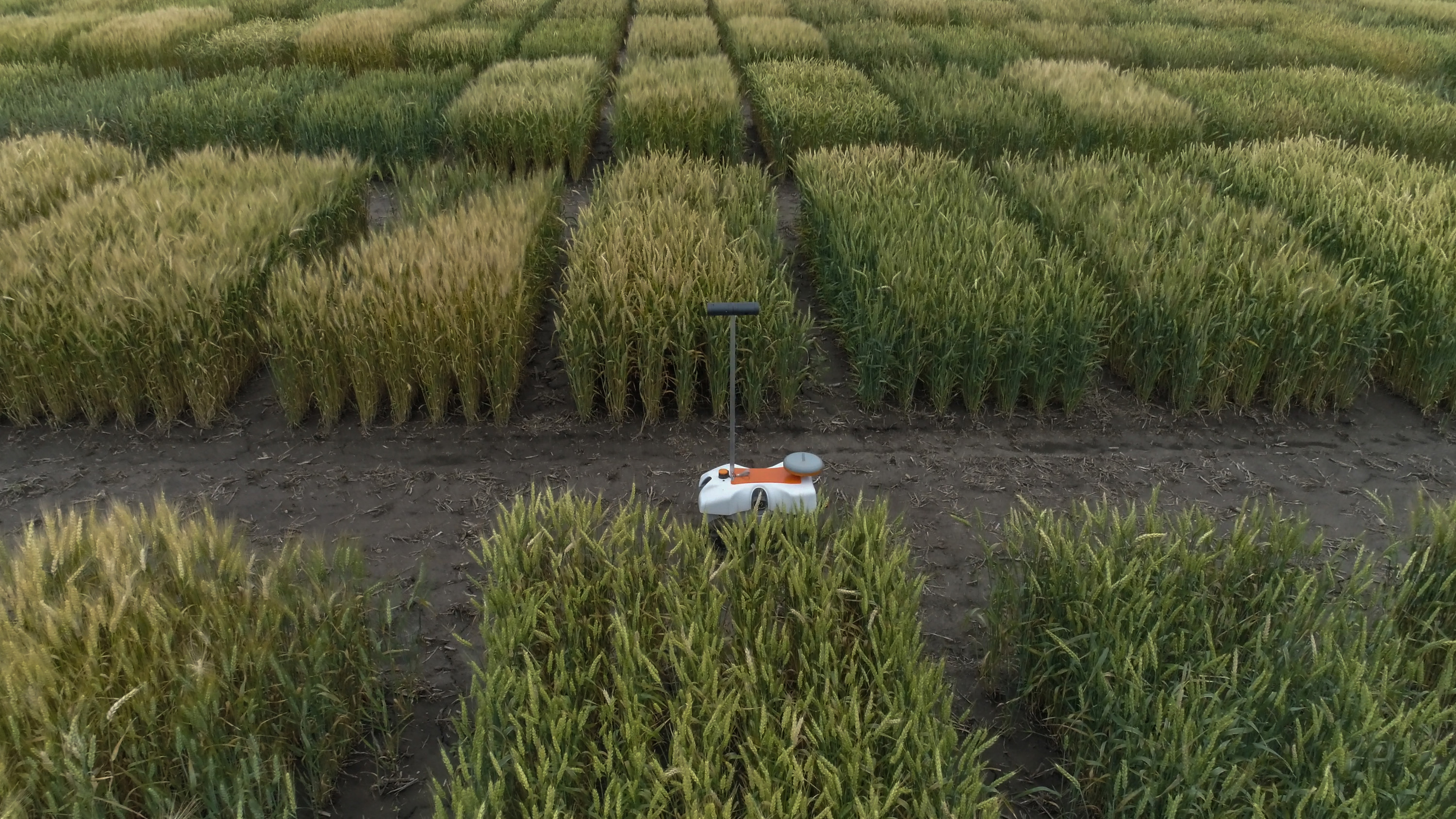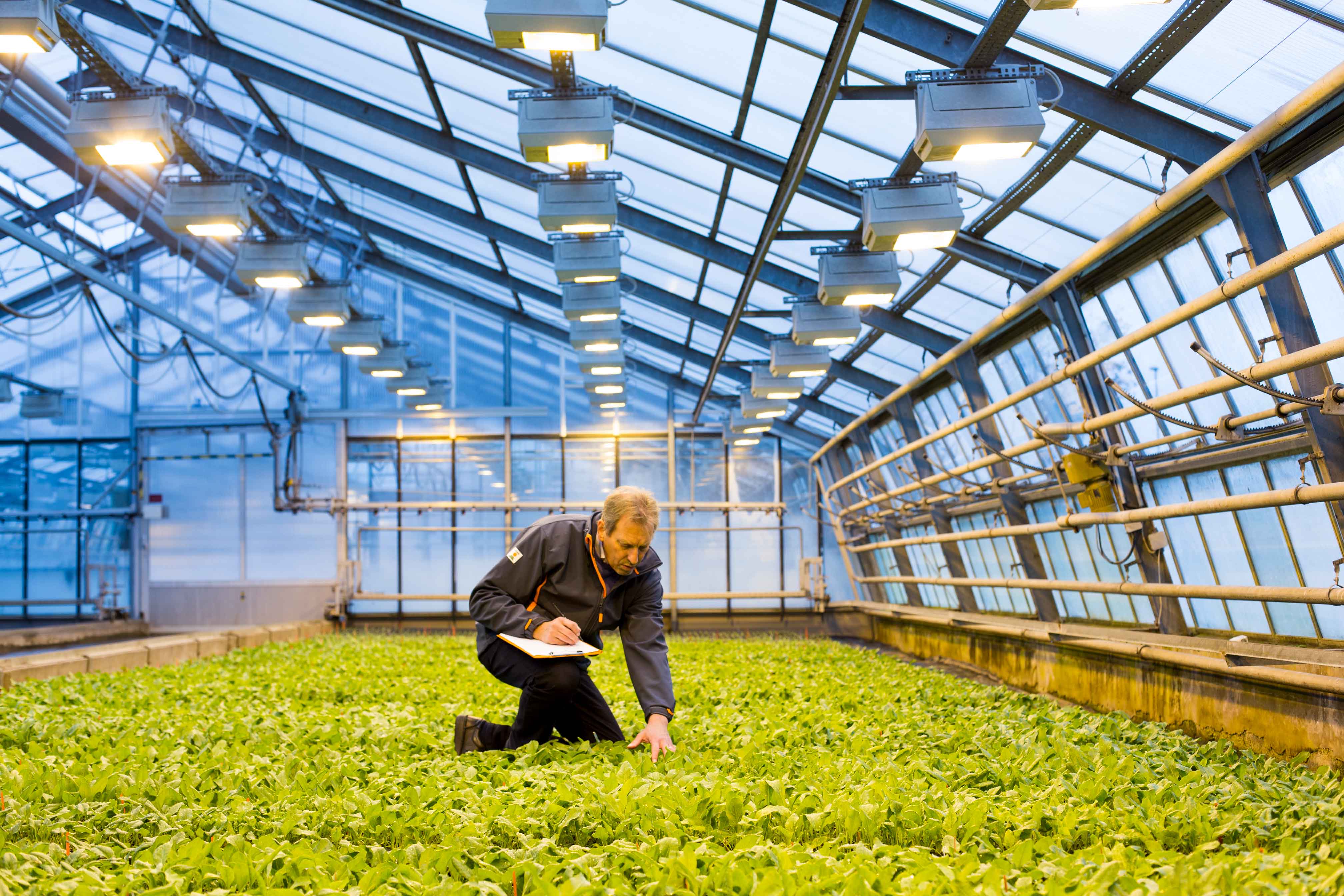Does the fungus affect photosynthesis?
It works like this: Photosynthesis, or the conversion of the sun’s light energy and carbon dioxide into chemical energy in the form of glucose, begins when the light is absorbed by the green pigment called chlorophyll. In the process, part of the energy absorbed by the plant is released again and re-emitted. This “glow” is called chlorophyll fluorescence. The researchers in Jülich record it with the help of the LIFT sensor, Muller says.
His hypothesis: If a leaf is infected with Cercospora, the infection will have an impact on photosynthesis in this area. Because chlorophyll fluorescence is closely related to the efficiency of photosynthesis, the altered radiance could be a sign of fungus infection on the affected leaf areas.
The following analysis shows how the data gathered by scientists from Clausthal and Jülich can be optimally combined. If the temperature of the affected area of an infected plant rises to a certain degree value, and if it re-emits a certain amount of energy on exactly this area, these findings will serve as two indications of Cercospora infection on the same area of the leaf.
Later on, this information should be automatically identified and reliably analyzed by computers using algorithms known as machine learning or artificial intelligence. A condition of achieving the high planned recognition rate is that the system be trained with known images. In the DataPlant project, these will be images of infected and healthy leaves. The team of physicists and cultivators will note on each photo whether it shows healthy or infected leaves and thus create a huge reservoir of training data for artificial intelligence. And because huge amounts of data are involved, the team speaks of “big data.”
“This process is not limited to Cercospora,” project head Christoph Bauer says. “We think that this principle can be employed to automatically spot many different leaf infections at an early stage – and we are laying the foundation for this right now.”
The interplay of new types of sensors, conventional photo analysis and machine learning has not been confined to pure research at KWS for a long time now: These technologies are already being used in cultivation and research.
Developments like these will provide farmers with faster access to different varieties, and rapid assessments of the health of their crops will also be possible, for instance using drones.

